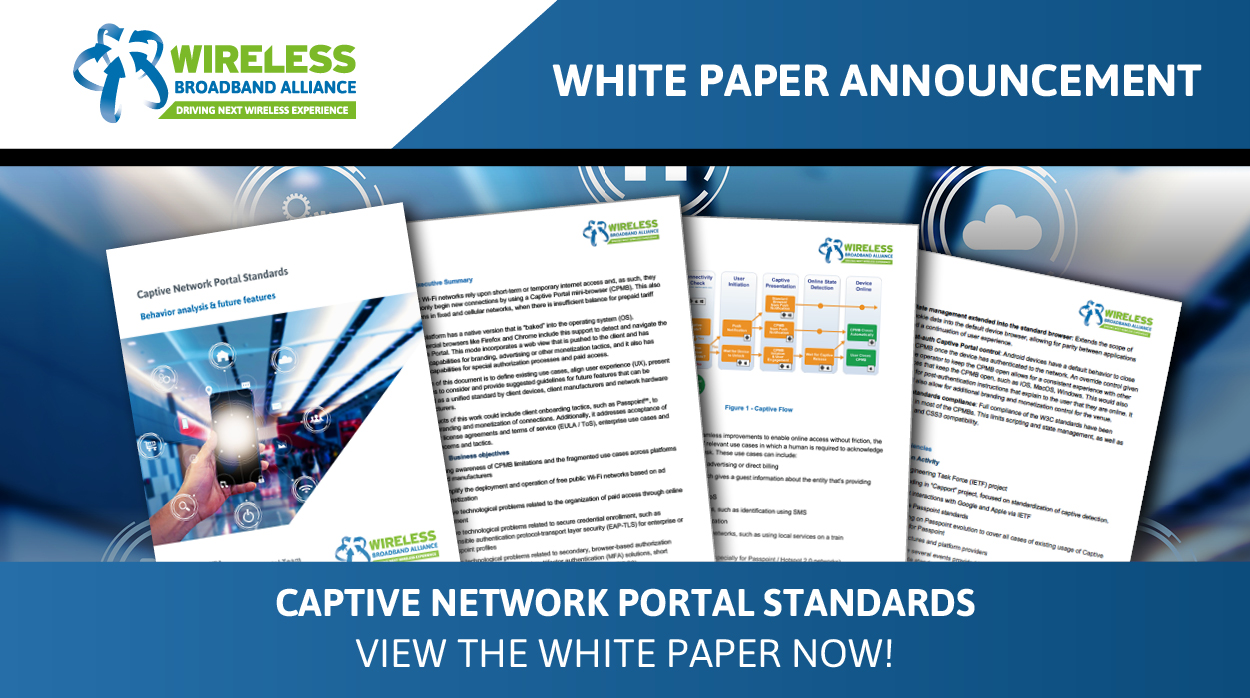Pedro Mouta,
Manager – PMO
Most public Wi-Fi networks rely upon short-term or temporary internet access, often initiating new connections with a captive portal mini-browser (CPMB).
For instance, CPMBs can be used to glean information from users through login pages, and they’re also used to ensure that users agree to acceptable use policies before being connected to the Internet.
This is an important mechanism used by all sort of service providers across the globe to monetize connectivity and to know who their users are in a much more detailed manner.
However, the Captive Portal behavior isn’t standardized across devices, manufacturers and operating systems, forcing network operators to balance the management and provision of good user experience against the multitudinous business requirements they must support.
Moreover, native versions of CPMBs have limited capabilities for branding, advertising and monetization, throttling the opportunities for special authorization processes and paid access.
To address these issues, the Wireless Broadband Alliance (WBA) recently released Captive Network Portal Standards – Behavior Analysis & Future Features, a white paper that defines existing use cases, assesses the current behavior of captive portals across different operating systems and provides guidelines that can be adopted as a unified standard by client devices, client manufacturers and hardware manufacturers, when it comes to core future features the solutions should encompass.
The new white paper also includes client onboarding tactics to enable branding and monetization of connections, especially through the use of NGH/Passpoint®. Moreover, it explores acceptance of end-user license agreements and terms of service, as well as enterprise use cases. Readers will learn how current operating systems handle Captive Portals, key use cases for monetization and recommendations for enhancing clients and onboarding UX.
Captive Network Portal Standards also includes a number of possible features for future deployments of CPMB, many of which are aimed at improving user experience and creating more conversions for all organizations. Specifically, the paper identifies recommendations based on the behavior of the agent and how it interacts with the network, including connectivity tests, unified login experiences, text-push messages and system support features.
As for the next stages of work, the WBA Captive Portal team is looking at two different topics, both addressing core cornerstones of the evolution of Wi-Fi:
- Captive Portal Evolution & Considerations in a Federated Environment
The first, focused on considerations on how the captive portals will evolve in a world of Passpoint® and Global Roaming Federation, a complementary study of the role of captive portal in a Roaming Consortium OI (RCOI) and Public Key Infrastructure (PKI) federated reality, and what would be the specific recommendations to the industry on how to better streamline CPMB in this environment.
- Captive Portal Deployment & User Experience Guidelines
The second, more technically focused on a requirement list to standardize best practices for deploying captive portal network across operating systems, with a particular eye to the end-user experience, a topic not commonly address in the industry.
Should you wish to influence the direction of the WBA work, please get in touch with us through the pmo@wballiance.com and we’ll bring your thoughts to the team. All feedback is always welcome.
The WBA Captive Network Portal Standards team involves a set of WBA Members such as Boingo Wireless, MaximaTelecom, Aruba, Global Reach, Eleven Software, Accuris Networks, Shaw Communications, Commscope/Ruckus, BT, Pareteum/iPass, BSG Wireless and Aptilo Networks.
Go ahead and grab your free copy of the white paper – Behavior Analysis & Future Features.






